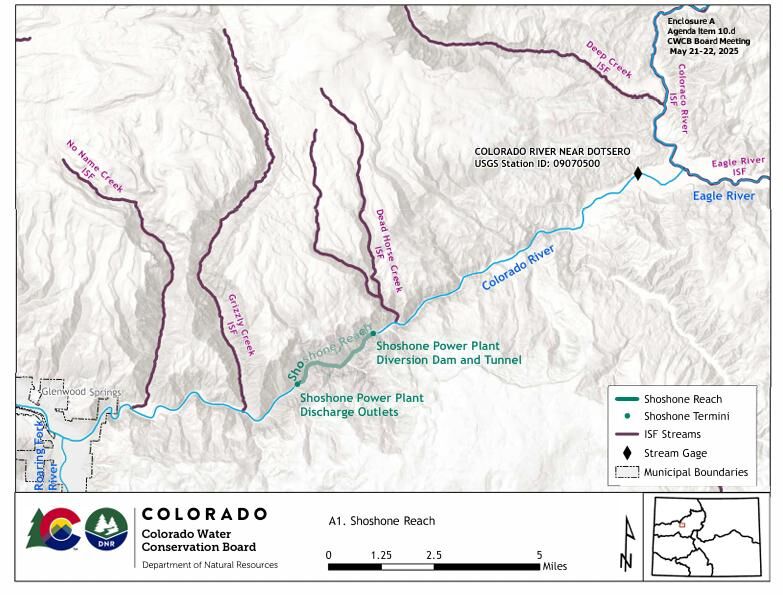Shoshone water rights acquisition approved by Colorado board

Colorado’s water board on Wednesday approved the acquisition of water rights associated with the Shoshone Power Plant for permanent instream flow protection.
The deal to purchase water rights from Xcel Energy for $99 million aims to ensure that a significant amount of water from the Colorado River continues to flow downstream during periods of low flow, rather than being diverted. The plan is designed to conserve water along the Western Slope, the parties said.
Under legislation passed in 1973, the water conservation board is the only entity that can legally appropriate water rights to preserve instream flows, which are considered a “beneficial use” of that water.
Under the designation as an instream flow, the board would not own the water right. That would stay in the hands of the river district and its partners. But the water board would have a legal interest in the water right and would be contractually obligated, along with the river district, to manage it for instream flow purposes.
“Securing one of the state’s most significant Colorado River water rights for permanent instream flow protection is a momentous achievement,” Lauren Ris, the board’s director, said in an email.
“This outcome reflects a tremendous amount of work, from extensive technical analysis and stakeholder engagement to thorough regulatory review and legal preparation. This careful evaluation ensures our investment delivers long-term benefits for the river and for Coloradans,” Ris said.
The board approved the agreement on a unanimous vote.
“Acquiring the Shoshone water rights for instream flow use is a once-in-a-lifetime opportunity to preserve and improve the natural environment of the Colorado River,” said Dan Gibbs, the executive director of the Colorado Department of Natural Resources.
Gov. Jared Polis applauded the decision. In a statement, the governor said, “Thousands of Coloradans, our fish, and our wildlife depend on this water every day. This is another step toward finalizing a powerful tool for supporting competing demands—hydropower, environment, agriculture and recreation—while giving west slope water users more certainty about our future water security.”
The board said the next step is to go to the water court to approve the change in water rights to include instream flow.
One of the major points of tension centers on the details of the legal agreements governing junior water rights.
Indeed, the challenge is complex, tied to an interconnected set of issues that includes water rights, drought management, and who gets to decide whether to withhold water from going downstream, if the situation warrants it.

The river district has raised almost all of the $99 million needed for the deal, although about $40 million is on hold under a decision by the Trump administration to suspend last-minute funding awarded by the Biden administration out of the Inflation Reduction Act.
The water flowing through the Shoshone plant is “non-consumptive,” meaning what goes into the plant to generate hydropower flows right back out into the river with no negligible loss.
The water then supports recreational and environmental needs, as the river heads west. The water rights date back to 1902 and are the most senior on the river. That makes them valuable and desirable.

















